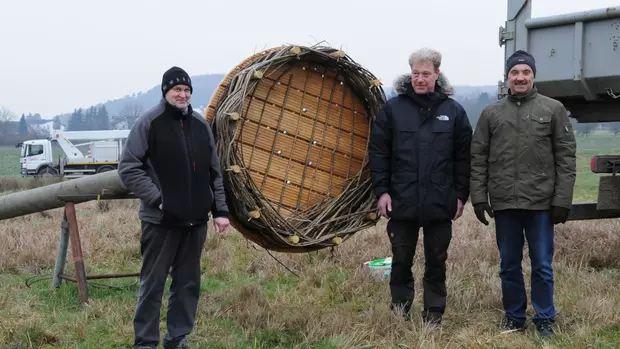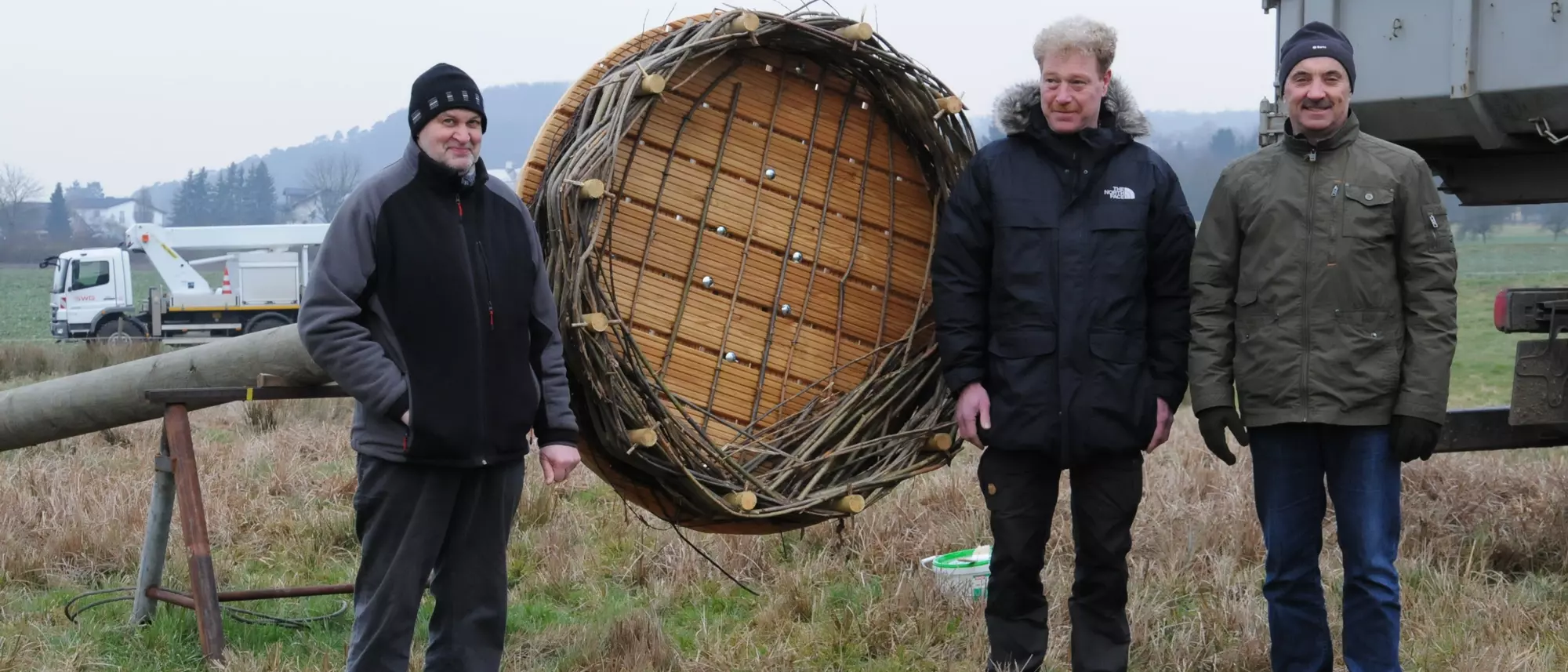
The storks can come: Stadtwerke Gießen is cooperating with the nature conservation organisation and the Großen-Buseck bird protection association to set up two more nesting platforms for storks.
Stadtwerke Gießen (SWG) is continuing its commitment to stork protection. In co-operation with the Nature and Biodiversity Conservation Union (NABU) Giessen and the Großen-Buseck bird protection association, the company has erected two new nesting platforms. On Wednesday, 9 March, the helpers arrived at the two sites with an excavator, loading crane and cherry picker to erect the new platforms.
The ten metre high masts were erected in the presence of Hans-Peter Münch from the Energy & Water Networks department at Stadtwerke Gießen, Dieter Wiesner and Ulrich Frank, both from the Buseck Bird Protection Association, as well as Monika Schütz, Reinhold Wiegand and other members of the NABU group. SWG is providing the necessary masts and organising their erection at the selected locations. "Without the support of the municipal utilities, the project would not be feasible," emphasises Reinhold Wiegand from NABU. This is already the ninth nesting platform that SWG has taken on in cooperation with bird protection organisations and nature conservation groups.
Ideal nesting sites
Previous planning had shown that the conditions at the sites on Grünberger Weg in Großen-Buseck, i.e. in the southern part of the Krebsbachtal valley, and on Lahnparkstraße in Giessen - very close to the car park of the Heuchelheim surf school - are ideal for the further settlement of storks. The plot of land in Großen-Buseck is privately owned, while the plot of water in Giessen is publicly owned. "It has been leased by the Hessian Society for Ornithology and Nature Conservation (HGON) for several years," explains Monika Schütz from NABU. Once both the HGON and the authorities had pledged their support, the realisation of the project could begin.
Conservation measures are taking effect
In the early 1980s, the white stork was almost extinct in Hesse. However, thanks to intensive conservation measures, the population of these popular lucky charms is now on the rise again. "Fortunately, there were 18 pairs in the district of Giessen in 2015, nine of which bred successfully," reports Monika Schütz. And Hans-Peter Münch also has some good news shortly after the new stork platforms were erected: "A few days ago, another pair of storks settled in Lahnparkstraße here in Central Hesse."

